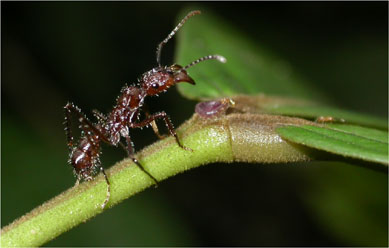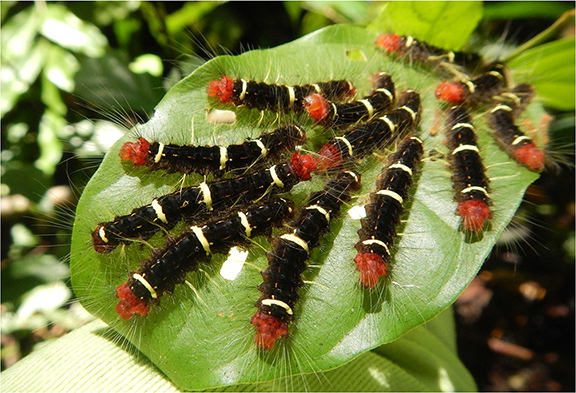Evolution of anti-herbivore defenses in Inga

The major focus of our lab asks how herbivores may drive the evolution of plant defenses, how plant defenses shape herbivore host choice, and how plant/herbivore interactions might influence the composition and diversity of plant communities in species-rich rainforests. And at a macro-evolutionary scale we ask how these interactions shape the evolutionary arms race. To address these questions, we use a phylogenetic approach and are characterizing plant defenses including all secondary metabolites, developmental and phenological escape, and visitation by ants that are attracted to extrafloral nectar.
We focus on plant-herbivore interactions among trees in the genus Inga (Leguminosae, Mimosoideae). The genus is very diverse (300 species), found throughout lowland forests of the Neotropics, and is among the most abundant genera of trees.
We study the defenses of expanding leaves, the main target of herbivores, and work at field sites in Panama and throughout the Amazon. To characterize the suite ofsecondary metabolites of Inga, we use an untargeted metabolomics approach. We also collect and sequence the DNA for lepidopteran herbivores to determine host choice. Phylogenetic, genomic and transcriptomic studies of Inga are collaborative with Toby Pennington and Katherine Kidner at the Royal Botanic Garden, Edinburgh, Kyle G. Dexter and Graham Stone at the University of Edinburgh.
There is little variation among species of Inga in habitat preference or in fruit and flower morphology, suggesting that the mechanisms responsible for high total and local diversity may not lie in differences in resource acquisition, pollination or dispersal. Instead, our work shows that anti-herbivore defenses are evolving faster than other traits, that more closely related species are not more similar in defenses and that species that co-occur as neighbors have defense profiles more different than expected by chance. Thus we suggest that the key to diversification and coexistence in Inga may lie in interactions with herbivores.
To address these questions, we are using a phylogenetic approach and are characterizing plant defenses including all secondary metabolites, phenological escape and ant visitation to extrafloral nectaries throughout Central and South America.



